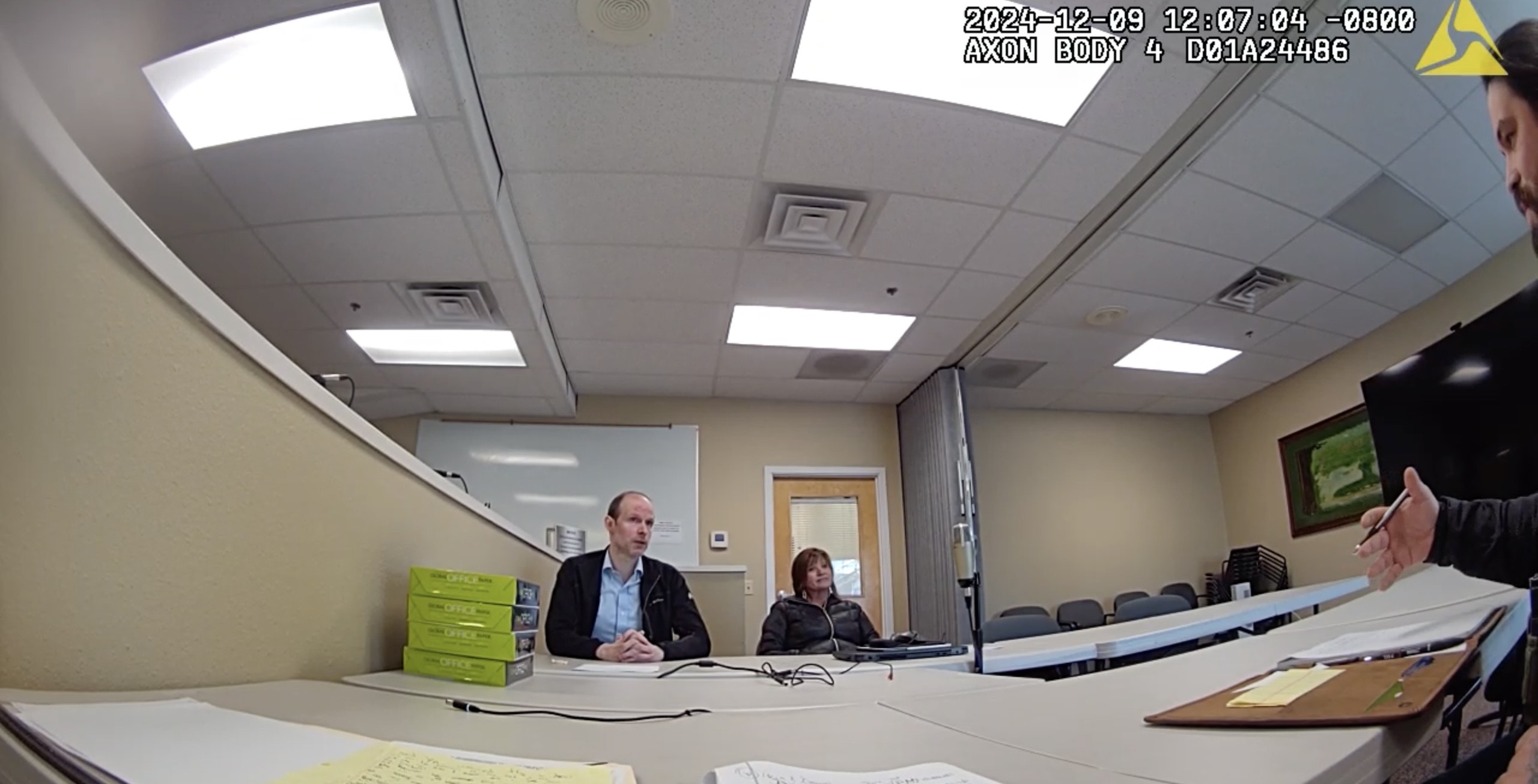Pet Report: ‘Free’ flea control a sad illusion
Published 5:00 pm Tuesday, July 5, 2005
The arrival of summer on the Peninsula has brought with it dire warnings that the flea season we face this year will be out of control because of the warm winter months we enjoyed, and the lack of any freezing weather to kill unprotected flea larvae.
Web sites abound with “free” and “almost free” answers to flea and tick control for our dogs and cats. One such site advertises “End Fleas and Ticks Forever! Naturally and for Pennies a Month.” This unqualified statement grabbed my interest. The very promise I’ve been looking for! By using “six common ingredients (found in any supermarket), and combining them in the proper proportion,” it says, “you can make a tasty treat that dogs and cats just love for pennies an ounce.”
The problem? They never tell us exactly what the six ingredients are. You have to buy the product, or the literature, to learn its inner secrets.
Why didn’t I think of this? (I’m always missing the chance to get rich; now someone else has beaten me to it again!) Unfortunately, although government regulations exist applying to “truth in advertising,” the sad fact is that these ads are still not truthful.
In words making wondrous promises, the “free flea control” advertisement appears to offer just the answer to your concerns. But, as in many similar situations, the rule is simple: Don’t be taken in!
The problem lies in the lack of information we receive about the program or the product, and our inability to read between the lines, to discover what the makers propose to give to our beloved companions.
Why would people manufacture a product for animals that is harmful? The answer is simple: Money.
The fact is this: Over-the-counter flea collars, as well as “bio-spot” products, are dangerous to your pet, especially to your cat. A pesticide collar is nothing more than a poison necklace around your pet’s head. It emits a constant toxic cloud that your pet inhales – and so do you, every time you hug your favorite furry friend.
Many (if not most) over-the-counter or non-prescription flea control products are useless. Some, in fact, are extremely toxic to dogs, cats and kittens – and cats are especially susceptible to the ones that are approved for use only on dogs.
Many people mistakenly buy these products for their pets. It’s not their fault – the chemical companies that make them want you to buy them. Their claims are misleading, and they couldn’t care less about the danger to your pets. So it pays for us to be extra careful when buying flea control products.
Like other chemical products, all flea products are made up of “active” and “inert” ingredients. In the case of most flea-killing chemicals, the “active” ingredient does, in fact, target and kill fleas. The word “inert” implies other chemicals that are somehow inactive. Although “inert” suggests harmless or benign activity and even connotes safety to many consumers, the fact is that legally, the word simply describes any added substances that are not the registered “active” ingredient. The trouble is, some of these “inert” ingredients are poisons as well.
This is important because most people assume that only the “active” ingredients in a chemical product are important. Why? Because the U.S. Environmental Protection Agency, which oversees the pesticide industry, requires a higher standard of scrutiny for “active” ingredients. They must undergo a battery of tests to determine their toxicological profiles, be registered with the EPA, and be listed on the product inserts and packaging.
In contrast, “inert” ingredients need not be listed on the product inserts and packaging. Whether listed or not, they are subject to much less testing than the “active” ingredients; “inerts” are generally tested in short-term studies for acute toxicity only.
In fact, many so-called “inert” ingredients used with pesticides are as toxic as the registered “active” pesticides, and sometimes even more so. For example, naphthalene, one of the “inerts” in a commonly sold flea killer (identified by the “active” ingredient of imidacloprid), showed clear evidence of producing nasal cancers through inhalation, as well as anemia, liver damage, cataracts, and skin allergies.
Why don’t pesticide manufacturers have to disclose all the ingredients in their products? This kettle began brewing in 1949, when Congress passed the Federal Insecticide, Fungicide, and Rodenticide Act (FIFRA), allowing manufacturers confidentiality on issues they contended would otherwise make them vulnerable to market competition. The “inert” ingredients, in other words, became protected by the industry as “trade secrets.”
Although protecting industry, this act supersedes the public’s right to know exactly what we and our pets are being exposed to and any possible health hazards that may result from this exposure. Without full disclosure, we’re unable to make educated decisions about which chemicals we want to avoid.
All pesticides pose some degree of health risk to humans and animals alike, up to and including death. Despite advertising claims to the contrary, both over-the-counter and veterinarian-prescribed flea-killing pesticides have their own set of possible side-effects.
So where does that leave us? Forewarned, we can control the poisons we put on our companion animals. But we must make informed decisions. There are also natural and homeopathic remedies to flea problems: The use of a flea comb, for example, is appropriate especially for very young or the very old animals. Natural pesticides, such as boric acid (used correctly), can work well – a lot of work, perhaps, but worthwhile in the long run.
Because you love your pet, why not make his or her life as safe as possible? Always remember these thoughts:
1. Use alternatives to pesticides if possible.
2. If you use pesticides, choose less toxic products.
3. Read the entire label and follow all instructions exactly.
As always, check with your veterinarian before giving your pets any type of medical or chemical therapy – and enjoy a great summer with them!
Black Lab SpecialWe’ve done it again…taken in way too many black labs. Lucky for you, cause we need to find them homes as soon as possible. To do this, we’re offering a $20 discount on any black lab you adopt. This will give you a price break and allow us to empty more kennels for the dogs on our waiting list. It’s truly a Win-Win situation for you, the dogs, and for our shelter!
Phat Cat SpecialDon’t miss out on having the best-designed cat in the window(s)! Our entire feline population – currently residing in their own “cat lounge” for viewing – is specially priced at only $10 each. Our round, somewhat firm phat ladies, along with our robust gentlemen of leisure, are spayed, neutered, with all shots current All this is included in the purchase price. These guys really need more exercise, having been kept captive within the walls of their mini-castle. It’s just in time to put them to work, cleaning up your yard (of mice, moles, and other icky things.) But, if it’s a kitten you’re after, we have a few furry cuties ready for adoption and more on the way!
Dog training offered
Mark your calendars now for a FREE dog training class at the Humane Society. Classes are for all dogs adopted from our Shelter. Trainer is Tina Woodworth of Chinook. Our last class is scheduled for Saturday, July 9 at the Shelter. Class begins at 1 p.m. Be sure to call early for a spot – all dogs must be pre-registered in order to attend.
Wish list – Shelter needs
This week our Wish List includes:
Canned cat and dog food, dog treats for training.
Dry cat food (our phat ladies prefer Kirkland or Friskies) We’re really short!
Volunteers to walk dogs.
Paper towels, garbage bags, laundry soap.
Computer ink cartridges – or a refill system – for an HP DeskJet 697c or an HP psi211oxi all-in-one (and any empty cartridges that we can recycle.)
As you know, we are a community-supported Shelter and depend on your contributions to keep our doors open. Thank you so much for caring!
The South Pacific County Humane Society Animal Shelter is at 330 2nd Street NE, next to the County buildings in downtown Long Beach, phone (360) 642-1180. Our mailing address is P.O. Box 101, Long Beach, WA 98631. Web site: www.beachpets.com. E-mail: humane@reachone.com. We’re open from 11 a.m. to 4 p.m. Tuesday through Saturday; closed Sunday and Monday. Monthly meetings, open to the public, are at 5:30 p.m. on the second Thursday of each month. We are proud to be a No Kill Shelter!





